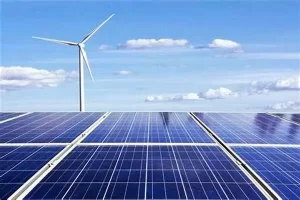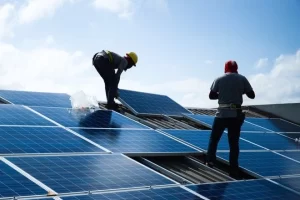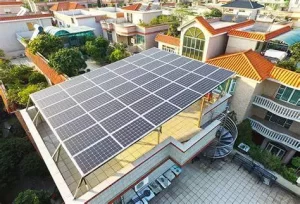Cost and Factors Influencing Solar Panels System for House
When contemplating the installation of solar panels system for house, cost stands as a pivotal consideration. The cost of solar panel systems is not fixed but is influenced by a variety of factors.
Firstly, let’s delve into the approximate costs of solar panels system for house. Generally, based on current market conditions, the reasonable construction cost of photovoltaic systems typically ranges from 8 to 10 yuan per watt. For instance, installing a 5kW (kilowatt) generating system for a household typically costs between 40,000 to 50,000 yuan. When considering the installation of solar panels system for house, it is advisable to engage professional installers for on-site assessments and to obtain detailed quotations. Additionally, factors such as the system’s electricity generation capacity, household electricity consumption, local subsidy policies, and electricity prices must be comprehensively considered to evaluate the return on investment and economic benefits.

Here are some cost estimation examples for reference:
– A household installing a 3kW photovoltaic system may incur costs around 25,000 yuan.
– Using equipment priced at 7.5 yuan per watt, installing a 5kW solar photovoltaic station with flat and sunny conditions could cost approximately 37,500 yuan.
– For a 100 square meter roof, installation costs for generating between 3000-5000 watts can range from 15,000 to 50,000 yuan depending on the chosen specifications.
– As of December 2019, using high-efficiency monocrystalline components with framed modules, and reputable inverters from manufacturers like Guangzhou Sanjing or Shenzhen Guraiwat, the cost for fully covering a 100 square meter roof is approximately 86,000 yuan. If self-installed with relevant knowledge, actual costs may be around 73,000 yuan.
It’s important to note that the price of solar panels system for house can fluctuate due to factors such as time, market supply and demand, technological advancements, and policy changes. Before making decisions, it is crucial to thoroughly understand local market conditions and related policies. Furthermore, ensuring the selection of reliable products and experienced installation teams is essential to guarantee system performance and longevity.
So, what factors contribute to an increase in the cost of solar panels system for house?
The rise in transportation costs is a significant factor. For example, during special situations like pandemics, shipment delays and disrupted supply chains can substantially increase transportation costs. For instance, transportation costs per watt could surge from the original 0.005 USD to 0.03 USD, representing a 500% increase. This increased proportion of overall production capital expenditures undoubtedly impacts the economic benefits of projects.
Fluctuations in raw material prices also greatly impact costs. Polysilicon, a core component of photovoltaic manufacturing, has seen significant price increases. For instance, the 2021 floods in Shanxi, China, disrupted coal production, leading to electricity restrictions in some regions and shortened operating times for polysilicon manufacturers. This backlog increased polysilicon costs by over 300%. Additionally, since January 2020, prices of other raw materials such as silver, copper, aluminum, and glass have also risen, further pressuring component prices.
Fluctuations in silicon wafer prices similarly affect costs. While silicon wafer prices overall are trending upwards, short-term changes in supply and demand can lead to temporary declines. Factors such as subdued demand in the supply chain and inventory levels can impact silicon wafer prices, thereby influencing the costs of solar panel systems.
Anti-dumping tariffs are another cost-increasing factor. If solar panels are exported to certain European and American countries, they may incur anti-dumping duties, potentially exceeding the product’s original price.
The choice of solar panel type is also closely related to costs. Amorphous silicon solar cells cost less than crystalline silicon solar cells, but they are less durable and have lower solar energy efficiency. To generate the same amount of electricity, more amorphous silicon solar panels may be required, thereby increasing costs. Although high-efficiency crystalline silicon solar panels may have higher initial costs, their ability to generate more energy may provide a long-term advantage in comprehensive costs.
The system’s scale also affects costs. Generally, the more solar panels installed and the larger the system, the higher the costs. Although it can offset more electricity bills, initial investment will increase.
Different installation types also lead to cost differences. The installation costs for different types of solar cell devices, such as roof brackets, ground brackets, and shed installations, may vary. Ground brackets and shed installations may require additional columns and fixing, resulting in higher labor and component costs.
The quality requirements also reflect in costs. Higher-quality solar panels typically offer advantages in reliability, but their prices may also be relatively higher. While opting for higher-quality products may entail slightly higher initial costs, they may deliver better performance and stability in the long term, reducing maintenance and replacement costs.
In conclusion, when considering the installation of solar panel systems, it is essential to fully understand and comprehensively consider these factors that may increase costs. This enables making informed decisions that are both wise and align with individual needs and economic conditions.
Contact us
- Email:[email protected]
- Tel: +86 13651638099
- Address: 333 Fengcun Road, Fengxian District, Shanghai
Get A Quote Now!
Read more

Unveiling Photovoltaic+Energy Storage: Four Major Application Scenarios Leading the Future of Energy
In this way, the energy landscape is evolving, and one of the most thrilling developments in renewables is the integration of photovoltaics energy storage.

From Theory to Practice: Four Methods for Estimating Photovoltaic Power Generation
Photovoltaic power generation has become an essential part of modern energy solutions, particularly in home solar systems and distributed power applications

Rack-Mounted Lithium Iron Batteries: Creating Efficient and Reliable Energy Storage Solutions
When it comes to modern energy solutions, rack-mounted lithium iron batteries are taking center stage in a variety of industries. Whether you’re powering data centers, stabilizing energy for households, or keeping critical systems online at 5G base stations, these batteries have become the unsung heroes of our electrified world.

Late Night Energy Saving Tips: How to Maximize Electricity Savings During Off-Peak Hours
With rising energy costs, homeowners are increasingly exploring innovative ways to save on their electricity bills. One effective approach is utilizing off-peak hours—times when electricity rates are significantly lower due to reduced demand.
